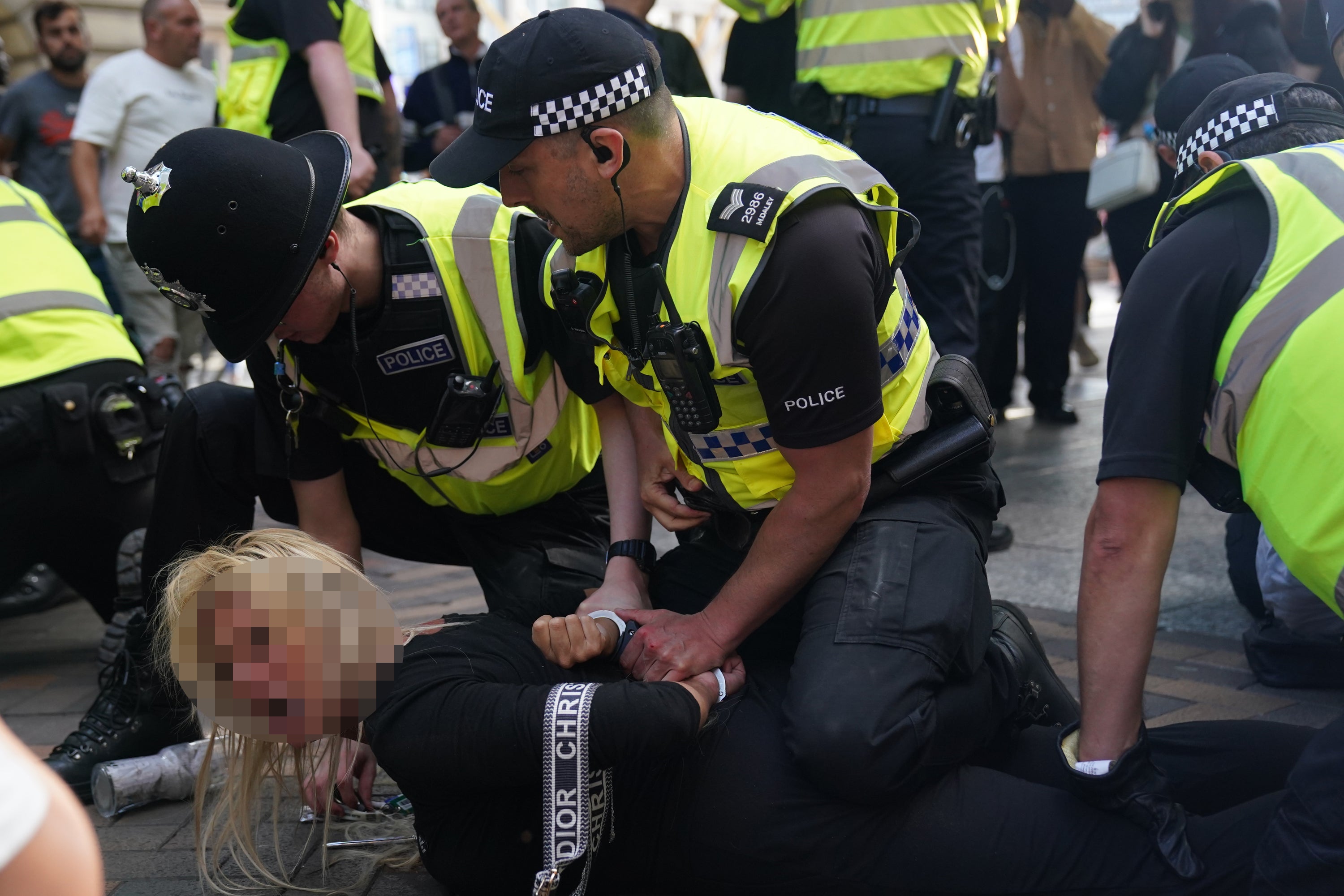Inside the ‘pink-pilling’ tactics the misogynist far right uses to recruit women
‘The internet right now is such a swirling vortex of far-right content. Sometimes it’s almost harder to avoid it than it is to find it,’ an expert tells Maya Oppenheim


Your support helps us to tell the story
From reproductive rights to climate change to Big Tech, The Independent is on the ground when the story is developing. Whether it's investigating the financials of Elon Musk's pro-Trump PAC or producing our latest documentary, 'The A Word', which shines a light on the American women fighting for reproductive rights, we know how important it is to parse out the facts from the messaging.
At such a critical moment in US history, we need reporters on the ground. Your donation allows us to keep sending journalists to speak to both sides of the story.
The Independent is trusted by Americans across the entire political spectrum. And unlike many other quality news outlets, we choose not to lock Americans out of our reporting and analysis with paywalls. We believe quality journalism should be available to everyone, paid for by those who can afford it.
Your support makes all the difference.Misogyny and male supremacy might lie at the heart of far-right ideology but that does not mean women are absent from such movements - with some caught up in the race riots that exploded across the UK this summer.
Author and journalist Lois Shearing has delved into the growing role that women play in far-right, neo-Nazi and white nationalist movements in her new book Pink-Pilled: Women and the Far Right.
Speaking to The Independent in the lead-up to the book’s release this February, Ms Shearing argues such movements are wielding a range of “cunning tactics” to radicalise women online. The author argues encountering transphobic, anti-immigrant views and Islamophobic views can lead to women being radicalised into the far right.
In the course of her research, Ms Shearing sought to consume the “digital diet” of a young woman who was being radicalised online. The investigative journalist spent 18 months using a fake identity to investigate far-right communities on forums, Facebook groups, Telegram channels, Instagram, X (Twitter), Pinterest, Tumblr, and other lesser-known platforms.

The author labels the process whereby women get drawn into the far right as “pink-pilling” - adding that it has parallels with the radicalisation process their male counterparts undergo.
“There are different routes that women come through – anti-feminism is a really big route for women – that surprised me quite a lot,” the author says. “They are similar to the manosphere. There are a lot of women who feel really frustrated with society and they blame feminism for that.”
Another issue is the proliferation of far-right material on social media platforms that do little to police it, under the guise of “free speech”. Ms Shearing said she has many friends who have encountered such content on their social media accounts despite never having interacted with similar material before.
“When we talk about journeying into the digital far right, it’s not really journeying anywhere,” the journalist added. “It keeps barging into our paths. I think the internet right now is such a swirling vortex of far-right content. Sometimes it’s almost harder to avoid it than it is to find it.”

Ms Shearing said the impetus for the book was her bewilderment at seeing women at protests in support of far-right activist Tommy Robinson.
During research for the book, Ms Shearing saw men publicly abusing and trolling online women who were also in the movement. The author spoke to a woman who was formerly in the far right who said she had experienced harassment and sexual violence during her time in extremist circles.
But for many women in the far right, being white ultimately overrides their sense of womanhood, Ms Shearing argued.
“When I started this project, I did so because I couldn’t find a satisfying answer to the question: why do women align themselves with movements that so clearly hate and harm them?” Ms Shearing asks in the book’s introduction.
“Why do they advocate against their own rights and bodily autonomy? Why do they preach submission at the cost of their own wellbeing?”

Speaking to The Independent, Ms Shearing explains that women in extreme right-wing circles are predominantly white – adding that while far-right ideology and white supremacy teaches women that they are inferior to men, it positions them above those from different ethnic backgrounds.
“White nationalism and the far right offer them an opportunity to reclaim the power they feel is their birthright as white yet denied to them as women,” the author adds.
Ms Shearing says some female far-right members believe women must be subservient and submissive to men and that their biology predisposes them to be so.
“They overlook the marginalisation they might be experiencing as women, or they are willing to almost let themselves be marginalised and objectified in these far-right communities if it means having power as white people,” she adds.
And there is the money. Ms Shearing argues that some female far-right influencers are profiting from hatred – adding that they have carved out a niche for themselves to make money by posting offensive content on platforms that reward engagement.
“They are just grifters,” she said. “But I think the way that social media is set up, wherein stuff that is rage bait tends to go more viral or get shared and promoted more, means that they are rewarded for spreading this kind of bigotry and hatred.”
“For some of these women, if they could make the same amount of money doing fitness influencing or makeup blogging, they would have, but those are very saturated markets and it’s harder to make money.”
The author also argues there has been a rise in women being “the faces of far-right movements” as they warn they are sometimes exploited by fellow members to “add this veneer of respectability” and make their extremism appear more approachable.
“The far right can say ‘we don’t hate women – we have women’,” she adds.
Join our commenting forum
Join thought-provoking conversations, follow other Independent readers and see their replies
Comments